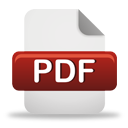

CLC number: R978.61
On-line Access: 2024-08-27
Received: 2023-10-17
Revision Accepted: 2024-05-08
Crosschecked: 2017-10-20
Cited: 0
Clicked: 6808
Kabiru Dauda, Zulaikha Busari, Olajumoke Morenikeji, Funmilayo Afolayan, Oyetunde Oyeyemi, Jairam Meena, Debasis Sahu, Amulya Panda. Poly( @article{title="Poly( %0 Journal Article TY - JOUR
基于聚乳酸羟乙酸共聚物的青蒿琥酯纳米颗粒的制备,及其抗疟活性和毒性评价创新点:以聚乳酸羟乙酸共聚物(PLGA)为载体,制备青蒿琥酯纳米颗粒。并以小鼠为模型,评估其抗疟疗效和安全性。 方法:以PLGA为载体,采用从单一的水包油乳剂中进行溶剂蒸发的方法制备青蒿琥酯纳米颗粒。借助X射线衍射和差示扫描量热分析对纳米颗粒进行表征。以4 mg/kg的剂量对感染疟原虫的雄性瑞士白化小鼠进行体内抗疟活性的研究,测定血液和肝毒性的相关指标。体外实验以小鼠腹腔巨噬细胞细胞系RAW 264.7为模型,在7.8~1000 µg/ml浓度范围内,测定游离型和包裹型青蒿琥酯的细胞毒性。 结论:实验结果表明,纳米颗粒的粒径为(329.3±21.7) nm,包封率为(38.4±10.1)%。与游离青蒿琥酯(58.2%)相比,基于PLGA的青蒿琥酯纳米颗粒(Art-PLGA)具有较高的抑虫率(62.6%),P<0.05。就血小板计数结果而言,对照组(305 000.00±148 492.40)明显地高于游离青蒿琥酯组(139 500.00±20 506.10)和Art-PLGA组(163 500.00±3535.53),P<0.05。因此,药物的使用没有导致肝毒性的产生。体外细胞毒性试验结果表明,Art-PLGA的半数抑制浓度(IC50,468.0 µg/ml)显著高于游离青蒿琥酯(7.3 µg/ml),P<0.05。基于PLGA的青蒿琥酯纳米颗粒是一种有效安全的抗疟治疗方法。 关键词组: Darkslateblue:Affiliate; Royal Blue:Author; Turquoise:Article
Reference[1]Acharya, S., Sahoo, S.K., 2011. PLGA nanoparticles containing various anticancer agents and tumour delivery by EPR effect. Adv. Drug Del. Rev., 63(3):170-183.  [2]Agnihotri, J., Singh, S., Bigonia, P., 2013. Formal chemical stability analysis and solubility analysis of artesunate and hydroxychloroquinine for development of parenteral dosage form. J. Pharm. Res., 6:117-122.  [3]Anitha, A., Deepagan, V.G., Rani, V.V.D., et al., 2011. Preparation, characterization, in vitro drug release and biological studies of curcumin loaded dextran sulphate-chitosan nanoparticles. Carbohyd. Poly., 84(3):1158-1164.  [4]Bhawana, R.K., Basniwal, H.S., Buttal, V.K., et al., 2011. Curcumin nanoparticles: preparation, characterization, and antimicrobial study. J. Agric. Food Chem., 59(5):2056-2061.  [5]Bigoniya, P., Sahu, T., Tiwari, V., 2015. Hematological and biochemical effects of sub-chronic artesunate exposure in rats. Toxicol. Rep., 2:280-288.  [6]Chadha, R., Gupta, S., Pathak, N., 2012. Artesunate-loaded chitosan/lecithin nanoparticles: preparation, characterization, and in vivo studies. Drug Dev. Ind. Pharm., 38(12):1538-1546.  [7]Cheesbrough, M., 1998. District Laboratory Practice in Tropical Countries. Part 1. Cambridge University Press, London.  [8]Chinaeke, E.E., Chime, S.A., Onyishi, V.I., et al., 2015. Formulation development and evaluation of the anti-malaria properties of sustained release artesunate-loaded solid lipid microparticles based on phytolipids. Drug Deliv., 22(5):652-665.  [9]Chittasupho, C., Xie, S.X., Baoum, A., et al., 2009. ICAM-1 targeting of doxorubicinloaded PLGA nanoparticles to lung epithelial cells. Eur. J. Pharm. Sci., 37(2):141-150.  [10]Clark, R.L., 2012. Effects of artemisinins on reticulocyte counts and and relationship to possible embryotoxicity in confirmed and unconfirmed malarial patients. Birth Def. Res. Part A: Clin. Mol. Teratol., 94(2):61-75.  [11]Cooper, D.L., Harirforoosh, S., 2014. Design and optimization of PLGA-based diclofenac loaded nanoparticles. PLoS ONE, 9(1):e87326.  [12]des Rieux, A., Fievez, V., Garinot, M., et al., 2006. Nanoparticles as potential oral delivery systems of proteins and vaccines: a mechanistic approach. J. Control Release, 116(1):1-27.  [13]Dikasso, D., Makonnen, E., Debella, A., et al., 2006. In vivo anti-malaria activity of hydroalcoholic extract from Asparaginus africanus in mice infected with Plasmodium berghei. Ethiop. J. Health Dev., 20(2):112-118.  [14]Efferth, T., 2007. Willmar Schwabe Award 2006: antiplasmodial and antitumor activity of artemisinin-from bench to bedside. Planta Med., 73(4):299-309.  [15]Faber, J.L., Chein, K.R., Mitlnacht, S., 1981. Myocardial ischemia: the pathogenesis of irreversible cell injury in ischemia. Am. J. Pathol., 102(2):271-281.  [16]Ibrahim, N., Ibrahim, H., Dormoi, J., et al., 2014. Albumin-bound nanoparticles of practically water-soluble antimalarial lead greatly enhance its efficacy. Int. J. Pharm., 464(1-2):214-224.  [17]Jain, R.A., 2000. The manufacturing techniques of various drug loaded biodegradable poly(lactide-co-glycolide) (PLGA) devices. Biomaterials, 21(23):2475-2490.  [18]Kumari, A., Yadav, S.K., Yadav, S.C., 2010. Biodegradable polymeric nanoparticles based drug delivery systems. Coll. Surf. B: Biointer., 75(1):1-18.  [19]Lai, S.K., O'Hanlon, D.E., Harrold, S., et al., 2007. Rapid transport of large polymeric nanoparticles in fresh undiluted human mucus. Proc. Natl. Acad. Sci. USA, 104(5):1482-1487.  [20]Liu, W.M., Gravett, A.M., Dalgleish, A.G., 2011. The antimalarial agent artesunate possesses anticancer properties that can be enhanced by combination strategies. Int. J. Cancer, 128(6):1471-1480.  [21]Mainardes, R.M., Evangelista, R.C., 2005. PLGA nanoparticles containing praziquantel effect of formulation variables on size distribution. Int. J. Pharm., 290(1-2):137-144.  [22]McNeil, S.E., 2005. Nanotechnology for the biologist. J. Leuk. Biol., 78(3):585-592.  [23]Meng, H., Xu, K., Xu, Y., et al., 2014. Nanocapsules based on mPEGylated artesunate prodrug and its cytotoxicity. Coll. Surf. B: Biointer., 115:164-169.  [24]Mesembe, O.E., Ivang, A.E., Udo-Attah, G., et al., 2004. A morphometric study of the teratogenic effect of artesunate on the central nervous system of the Wistar rats foetus. Nig. J. Physiol. Sci., 19(1):92-97.  [25]National Research Council, 2010. Guide for the Care and Use of Laboratory Animals. National Academies Press, Washington, DC.  [26]Nguyen, H.T., Tran, T.H., Kim, J.O., et al., 2015. Enhancing the in vitro anti-cancer efficacy of artesunate by loading into poly  [27]Nobbmann, U.L.F., 2014. Polydispersity—what does it mean for DLS and chromatography? http://www.materials-talks.com/blog/2014/10/23/polydispersity-what-does-it-mean-for-dls-and-chromatography [accessed on Oct. 24, 2016]  [28]Nordström, P., 2011. Formulation of Polymeric Nanoparticles Encapsulating and Releasing a New Hydrophobic Cancer Drug. MS Thesis, Chalmers University of Technology, Göteborg, Sweden.  [29]Panda, A., Meena, J., Katara, R., et al., 2016. Formulation and characterization of clozapine and risperidone co-entrapped spray-dried PLGA nanoparticles. Pharm. Dev. Technol., 21(1):43-53.  [30]Pradhan, R., Poudel, B.K., Ramasamy, T., et al., 2013. Docetaxel loaded polylactic acid-co-glycolic acid nanoparticles: formulation, physicochemical characterization and cytotoxicity studies. J. Nanosci. Nanotechnol., 13(8):5948-5956.  [31]Tona, L., Mesia, K., Ngimbi, N.P., et al., 2001. In vivo antimalarial activity of Cassia occindentalis, Morinda morindoides and Phyllanthus niruri. Ann. Trop. Med. Parasitol., 95(1):47-57.  [32]White, T.E., Bushdid, P.B., Ritter, S., et al., 2006. Artesunate-induced depletion of embryonic erythroblasts precedes embryolethality and teratogenicity in vivo. Birth Def. Res. Part B: Dev. Reprod. Toxicol., 77(5):413-429.  [33]Woerdenbag, H.J., Moskal, T.A., Pras, N., et al., 1993. Cytotoxicity of artemisinin-related endoperoxides to Ehrlich ascites tumor cells. J. Nat. Prod., 56(6):849-856.  [34]Wohlfart, S., Khalansky, A.S., Gelperina, S., et al., 2011. Efficient chemotherapy of rat glioblastoma using doxorubicin-loaded PLGA nanoparticles with different stabilizers.  [35]PLoS ONE, 6:e19121.  [36]Zhang, Z.P., Feng, S.S., 2006. The drug encapsulation efficiency, in vitro drug release, cellular uptake and cytotoxicity of paclitaxel-loaded poly(lactide)-tocopheryl polyethylene glycol succinate nanoparticles. Biomaterials, 27(21):4025-4033.  Journal of Zhejiang University-SCIENCE, 38 Zheda Road, Hangzhou
310027, China
Tel: +86-571-87952783; E-mail: cjzhang@zju.edu.cn Copyright © 2000 - 2025 Journal of Zhejiang University-SCIENCE | ||||||||||||||


 ORCID:
ORCID:
Open peer comments: Debate/Discuss/Question/Opinion
<1>